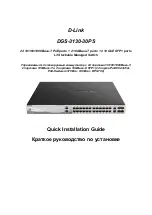
Operation Manual – IPv4 Routing
H3C S3610&S5510 Series Ethernet Switches
Chapter 1 Static Routing Configuration
1-1
Chapter 1 Static Routing Configuration
When configuring a static route, go to these sections for information you are interested
in:
z
z
z
Displaying and Maintaining Static Routes
z
Note:
The term “router” in this document refers to a router in a generic sense or a Layer 3
switch.
1.1 Introduction
1.1.1 Static Route
A static route is a special route that is manually configured by the network administrator.
If a network’s topology is simple, you only need to configure static routes for the
network to work normally. The proper configuration and usage of static routes can
improve network performance and ensure bandwidth for important network
applications.
The disadvantage of using static routes is that they cannot adapt to network topology
changes. If a fault or a topological change occurs in the network, the routes will be
unreachable and the network breaks. In this case, the network administrator has to
modify the static routes manually.
1.1.2 Default Route
A router selects the default route only when it cannot find any matching entry in the
routing table.
If the destination address of a packet fails to match any entry in the routing table, the
router selects the default route to forward the packet.
If there is no default route and the destination address of the packet fails to match any
entry in the routing table, the packet will be discarded and an ICMP packet will be sent
to the source to report that the destination or the network is unreachable.
















































